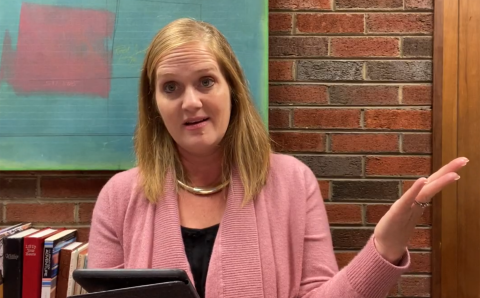When my adoptive mother died, the process of mourning was short. In fact, half of the family, including me, didn’t even go to the lunch after the burial. When my 7-month-old daughter died of sudden infant death syndrome, the process was similar, except I did go to that lunch.
As an Indigenous person, when I compare the style of mourning in my non-Indigenous upbringing to what I have witnessed in Indigenous communities, there is a vast difference. It seems to me that the Indigenous way of mourning is similar to what I have read in the Scriptures.
One helpful aspect of mourning in Indigenous communities is that the viewing of the body is more of a public event. When someone dies, the body is brought either into the living room of the closest family member or placed at the front of a community hall. When we look at the Scriptures, we see many public forms of mourning, such as people being hired to mourn publicly.
The second helpful aspect is that these wakes can go for two to three days (but mostly two days, from what I have witnessed). When we look at the Scriptures, we also see that the mourning process went anywhere from seven to 30 days and sometimes longer. At the end of the wake there is a formal service, the last formal viewing of the body, and then the graveside service, where people will take shovels and cover the casket with dirt.
The third helpful aspect is that the family will often have public outbursts of crying and mourning, even clinging to the casket. At some services, the family and friends of the deceased will have a final viewing of the body after the formal service is completed even though the wake has been going on for at least two days. Sometimes family or elders must drag a mourner away from the casket, which others are trying to close, so everyone can go to the graveside service.
Depending on where the Indigenous or Native American person is from, some of these aspects will vary, but there will be many similarities. A friend who is a missionary in Africa recently told me the mourning process in the village where she serves is like what I described in my experiences but more intense. And the biblical picture of mourning is even more intense and extended.
Having a more public expression of mourning and an extended time to mourn as a community are far from being individualistic and time-oriented. Many professionals and authors describe grief and loss as occurring in up to 12 stages, all part of the intentional approach to grief necessary for healing.
I believe we all can learn some valuable lessons from this Indigenous style of mourning that is more in line with Scripture. It allows the individual and the community to say goodbye without rushing, resisting the pull to be left alone. Psalm 118:5 says, “In my anguish I cried to the Lord, and he answered by setting me free” (NIV 1984). We can all learn to enter our pain more deliberately and allow God to set us free from our anguish.
About the Author
Parry Stelter is originally from Alexander First Nation that is part of Treaty Six Territory. He’s a Sixties Scoop Survivor. He’s an author, speaker, writer, scholar, workshop facilitator, ‘Blanket Exercise’ facilitator, pastor, chaplain, and ambassador of the Gospel and ambassador of his fellow Indigenous People. Visit his website at www.wordofhopeministries.ca







